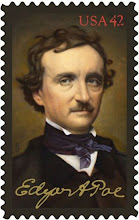The importance of symbols can be traced back to the cave drawings in France during the beginning of humankind. Symbols are emblematic of ideas, reasoning, and memories. They have complex meanings and literal meanings. Also, symbols can have narrow or wide range of meanings. Symbols can change over time and their meaning can take on new dimensions in relation to setting, individuals, and age. Symbols can be found everywhere. They are important to literature because they make the story come alive and hold meaning for us. Edgar Allan Poe’s works of fiction draw on the strength of symbolism found in various symbols referenced in his writings. In “Berenice,” Poe used teeth to provide symbolic meaning of his character’s motivations and behaviors.

In “Berenice,” the story centers on a young man and a young woman, his cousin, named Berenice. Berenice was “[…] agile, graceful, and overflowing with energy […]” while the narrator was “[…] ill of health and buried in gloom […] (Poe 226).” The narrator possesses no affection for his young cousin yet he proposes marriage to her. His interest is not with her but with her teeth. This fascination is an expression of his monomania, a pathological obsession with one person, thing or idea (Monomania). In the beginning, the narrator has no interest in his cousin. She was his opposite, and this plunged him deeper into his solemnity. However, when her condition changed, he took notice. Suddenly, his cousin succumbs to her condition and is buried. Entirely obsessed, the narrator, in a trance, digs up his cousin and extracts her teeth.
While Berenice’s teeth are the object of the narrator’s obsession, they are symbolic of her “[…] brightest days […]” but they represented narrator’s “[…] passions of the mind […] (Poe 229).” The narrator’s feelings for Berenice “[…] had never been of the heart […] (Poe 229).” Instead, his “[…] passions always were of the mind […] (Poe 229).” She was not a “[…] thing to admire, but to analyze […] (Poe 229).” The narrator described her teeth as “[…] excessively white, with […] pale lips writhing about them […] (Poe 230).” However, why obsess about teeth? The purpose of teeth is break down food that is consumption. Relating this back to the narrator’s obsession, they represent the narrator’s obsessive desire to analyze, explore, and consume knowledge. By dismantling Berenice, he can figure out more about his dual condition; upon discovery, he might be able cure himself of his affliction.
Berenice’s teeth symbolize the duality that is found within the story. The teeth represent the last visage of Berenice’s health. Her body changes drastically and the narrator notes with concern that is has altered Berenice “[…] in the singular and most appalling distortion of her personal identity […] (Poe 229).” The teeth represent life and death. According to Sigmund Freud, the teeth falling out and extraction of teeth are symbols of castration as a punishment for masturbating (Kanner). In Berenice, we are not privy to any concrete information regarding the sexuality of the characters. However, the narrator tells us that his obsession is in the mind and not of the flesh. Instead of castration, the teeth could be a symbol of his divorce from sanity (i.e. punishment for his selfish obsessions and the neglect of his cousin), or according to Linda Dryden (2003), this symbolism of duality brings to our attention to explore “[…] the horror of what we may be capable of […].”
Edgar Allan Poe’s use of symbolism in his stories provides the reader with a deeper understanding of his characters’ motivations. “Berenice” is a story that explores life, obsession, mental illness, self-awareness, and the quest for knowledge. The symbol of exploration in “Berenice” is a set of teeth possessed by the young woman named Berenice. They represent duality and the narrator’s obsessive nature. Through symbolism, we find the inner dialogue of the characters, and the realization of how this literary device connects, controls, and maintains the structure of a tale.
Dryden, Linda. The Modern Gothic and Literary Doubles: Stevenson, Wilde and Wells. New York: Palgrave Macmillan, 2003. 38.
Kanner, Leo. “The Tooth as a Folkloristic Symbol.” The Psychoanalytic Review 15 (1928): 37-52. Psychoanalytic Electronic Publishing. 21 June 2009
"monomania." Merriam-Webster Online Dictionary. 2009. Merriam-Webster Online. 21 June 2009
Poe, Edgar Allan. “Berenice.” Poe: Poetry, Tales, & Selected Essays. New York: The Library of America, 1996. 225-233.

Post a Comment